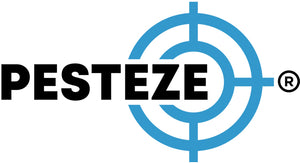BIRD CONTROL FOR RESTAURANTS AND FOOD SERVICE

BIRD CONTROL FOR RESTAURANTS AND FOOD SERVICE
SUMMARY
Restaurants and food service facilities face strict health code requirements that make bird control essential for regulatory compliance and customer safety. This specialized guide addresses the unique challenges of commercial food establishments with solutions that maintain sanitary conditions while protecting business reputation and operations.
FEATURES
- Health Code Compliance: Solutions that meet local health department regulations and inspection requirements.
- Customer Experience Protection: Discrete deterrents that maintain pleasant dining environments and outdoor spaces.
- Food Safety Assurance: Methods that prevent contamination risks and maintain sanitary food preparation areas.
- Outdoor Dining Solutions: Specialized approaches for patios, terraces, and al fresco dining areas.
- Waste Management Integration: Bird control strategies that work with existing waste handling procedures.
- Professional Implementation: Industry-specific installation and maintenance protocols for commercial kitchens.
GUIDE DESCRIPTION
Food service establishments attract birds through multiple factors including food odors, waste materials, and outdoor dining areas, but bird presence creates serious health code violations and customer experience problems. Effective commercial bird control requires comprehensive approaches that address sanitation requirements while maintaining the aesthetic and functional needs of hospitality businesses.
Outdoor dining area protection requires solutions that deter birds without compromising customer comfort or visual appeal. Transparent netting systems installed above seating areas provide complete bird exclusion while remaining nearly invisible to diners. Retractable canopy systems with integrated bird barriers offer weather protection and pest control in a single solution.
Kitchen and food preparation area security demands the highest level of bird exclusion to prevent contamination and health code violations. Screen systems for loading dock areas prevent bird entry during deliveries, while automatic door systems minimize exposure time when staff movement requires access. Vent and exhaust system protectionprevents birds from accessing kitchen areas through ventilation systems.
Waste management area control presents unique challenges because dumpsters and grease storage naturally attract birds seeking food sources. Enclosed waste storage systems with bird-proof lids and access controls reduce attraction while meeting sanitation requirements. Regular cleaning schedules for waste areas eliminate food residues that draw birds to these locations.
Professional-grade deterrent systems designed for commercial applications provide reliable performance under heavy use conditions. Motion-activated devices, ultrasonic systems, and automated sprinkler deterrents offer continuous protection without requiring constant staff attention. Remote monitoring capabilities allow managers to track system performance and adjust settings as needed.
Staff training protocols ensure consistent implementation of bird control measures without disrupting service operations. Proper door closing procedures, waste handling techniques, and spill cleanup protocols eliminate factors that attract birds to food service areas. Regular inspection schedules help identify problems before they escalate into health code violations.
Regulatory compliance documentation is essential for health department inspections and liability protection. Maintenance records, pest control service logs, and staff training documentation demonstrate due diligence in maintaining sanitary conditions. Professional pest control contracts often satisfy regulatory requirements while providing expert implementation.
Seasonal adaptation strategies account for changing bird behavior patterns and migration cycles. Spring nesting prevention focuses on eliminating potential nesting sites before breeding season begins, while fall preparation addresses increased bird activity as natural food sources become scarce. Weather-related adjustments ensure deterrent systems remain effective through all seasonal conditions.
Brand reputation protection requires discrete bird control methods that don't detract from the dining experience. Architectural integration of deterrent systems maintains aesthetic appeal while providing effective protection. Customer complaint protocols address bird-related issues quickly before they impact online reviews or health department reports.
Insurance and liability considerations favor proactive bird control programs that demonstrate commitment to food safety and customer protection. Documented pest management programs may qualify for insurance premium reductions while providing legal protection in case of contamination incidents. Professional consultation helps ensure comprehensive coverage of all potential liability areas.
Cost-benefit analysis for restaurant bird control should include potential losses from health code violations, customer complaints, and reputation damage alongside direct implementation costs. Prevention costs typically represent small fractions of potential violation fines, cleanup expenses, and lost revenue from contamination incidents.
Multi-location standardization allows restaurant chains to implement consistent bird control protocols across all properties. Standardized equipment specifications, maintenance schedules, and staff training programs ensure uniform protection levels while simplifying management and compliance monitoring across multiple facilities.
- Pukhraj Sharma


Comments 0